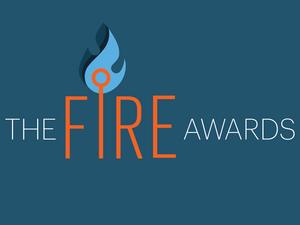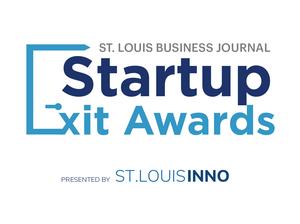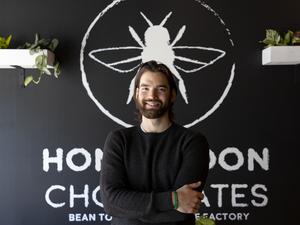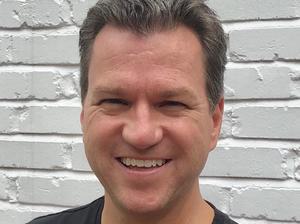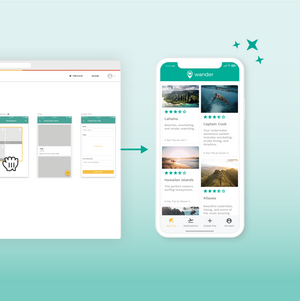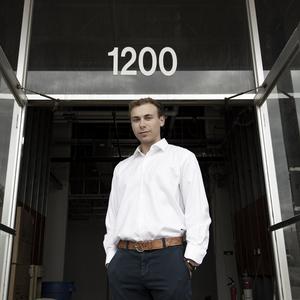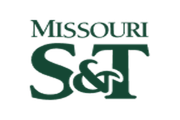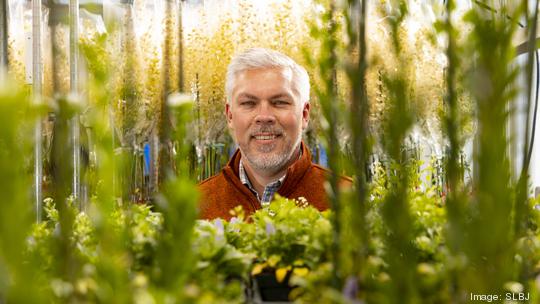
Fire Awards: Winner - Agtech/food tech
After being named earlier this year by St. Louis Inno as a 2022 Startup to Watch, CoverCress has also shown why it’s on fire. The agriculture technology startup, which is bringing a new cash crop to market, in April announced its inked a commercial partnership with Chesterfield-based agriculture giant Bunge (NYSE: BG) for its crop to be used to develop renewable fuel. It also closed on $26 million in fresh funding, securing capital from Bunge and oil giant Chevron Corp. (NYSE: CVX). The milestones come as CoverCress this year plans for a full commercial launch of its crop, a rotational, oilseed cash crop that provides winter and early spring soil cover between corn harvest and soybean planting. It is based on the native plant pennycress.
Mike DeCamp, CEO of CoverCress, shared more on the startup's path to commercialization:
How is CoverCress disrupting the agtech industry? We are bringing the first rotational crop to the Midwest since canola. This is a once in a lifetime event. As a winter-grown crop, we are not just a replacement crop, but a new crop to grow in a corn/bean rotation giving growers income on 3 crops in 2 growing seasons. Because we are grown over winter on otherwise fallow ground, our crop technology delivers the environmental benefits of a cover crop (carbon sequestration; nutrient runoff mitigation; improved soil health). Our crop technology also contributes to the lowering of greenhouse gas emissions as our oil is used to produce sustainable/renewable fuels like renewable diesel and aviation fuel.
CoverCress recently inked a commercial deal with Bunge and received investment from Bunge and Chevron. How has it been able to form relationships with such massive companies? From our start, our strategy has been to take our grain to crush to extract its oil. Our oil has an extremely low carbon intensity score which makes it an ideal feedstock for renewable fuel production. When crushed, we produce meal in addition to the oil. Our meal has the nutritional profile of canola meal which makes it a sustainable feed product for livestock. Knowing this from the start, we also knew we needed to develop a relationship with someone with crush capacity. We had active discussions over the years through our outbound efforts with many of the “ABCD” grain processors (i.e., ADM, Bunge, Cargill, Dreyfuss) to develop a strategic relationship similar to what we had with Monsanto/Bayer. Our efforts with Bunge finally bore fruit in 2021. We also were strategically focused on who our end customer would be, and identified users of our oil as key. Similar to the ABCD’s, we actively pursued discussions with large oil companies, niche renewable fuel producers and others. This led to our success in bringing REG (Renewable Energy Group) on as a strategic investor in 2021 alongside Bunge. We were blessed to have Chevron become part of the mix for our strategic partnership efforts because of the JV they entered into with Bunge as well as their acquisition of REG.
How is being headquartered in St. Louis a competitive advantage for CoverCress? The best, one word answer, is TALENT. We have a large contingent of ex-Monsanto/Bayer individuals on our team. Being located in St. Louis made it possible to recruit talent from one of the largest and best known agricultural companies in the world. We also benefit from being part of the 39 North agtech ecosystem. This is another great source/network for recruiting talent. In addition, we can access world-class research resources that are only available in just a few other locations in the U.S. We could not have created our powerful product development engine without access to such resources as the greenhouse space at the Danforth Plant Sciences Center or the lab space co-located to the greenhouses at BRDG Park.
In recent years, CoverCress has transitioned from an R&D company to commercializing its product. How has it managed that inflection point? If you think of our value chain, it consists of product development (breeding, gene editing, agronomy) on one end and downstream customers on the other (fuel manufacturers, animal protein producers) on the other. We have our product and we have our customer. To get the product to the customer, we have to pull it through the farm gate. Knowing this, we have been adding talent that has the knowledge and expertise to launch an agtech product like our CoverCress crop for farmers and to create a positive experience for those farmers that work with us.
What is your company’s top goal for the next year? We will plant our first large-scale crop this fall. Our goal is to be on 10,00 acres and for the grain from this crop that is harvested in late spring of 2023 to go to our first customer in its whole grain form as an ingredient in feed pellets for broiler chickens (4% inclusion).
There’s currently concern about an economic downturn and what that means for startups. What steps is your company taking to ensure it can continue to grow, even in a downturn? Completing our Series C-1 round with Bunge/Chevron and getting an infusion of capital that was greater than all of the capital we had raised to date before that event puts us in a very good position to have what we need to be successful for the next 3-4 years. This is a great safety net and was timely because we don’t have to worry about another capital raise for several years and during this economic downturn.
Are you hiring now? If so, for what roles? As we continue to grow, we will continue to invest in our product development team. We are currently looking to add lab tech positions to our team. Our administrative needs are increasing as we go from R&D to commercial and are currently looking to add accounting/finance positions. Finally, in order to grow our acreage, we need more feet on the ground recruiting farmers and will look to add experienced ag salespeople to our team as well as agents that have relationships with farmers and can represent our crop.
For links to profiles of winners and finalists in the 2022 Fire Awards and Startup Exit Awards, go here:
